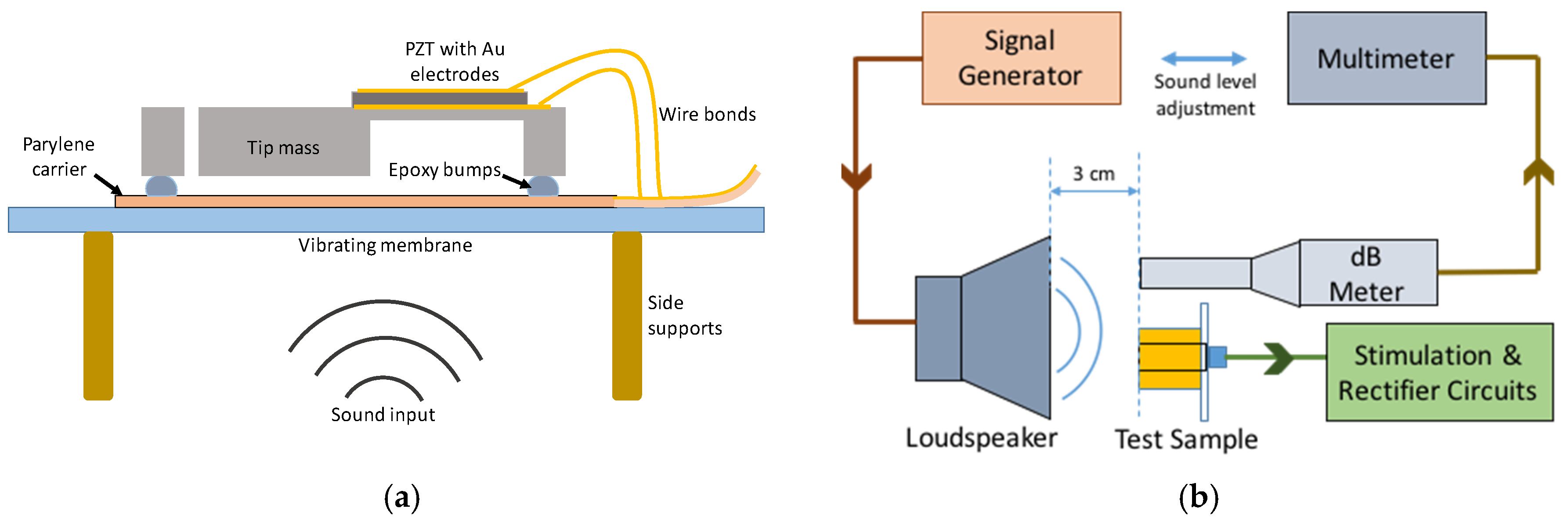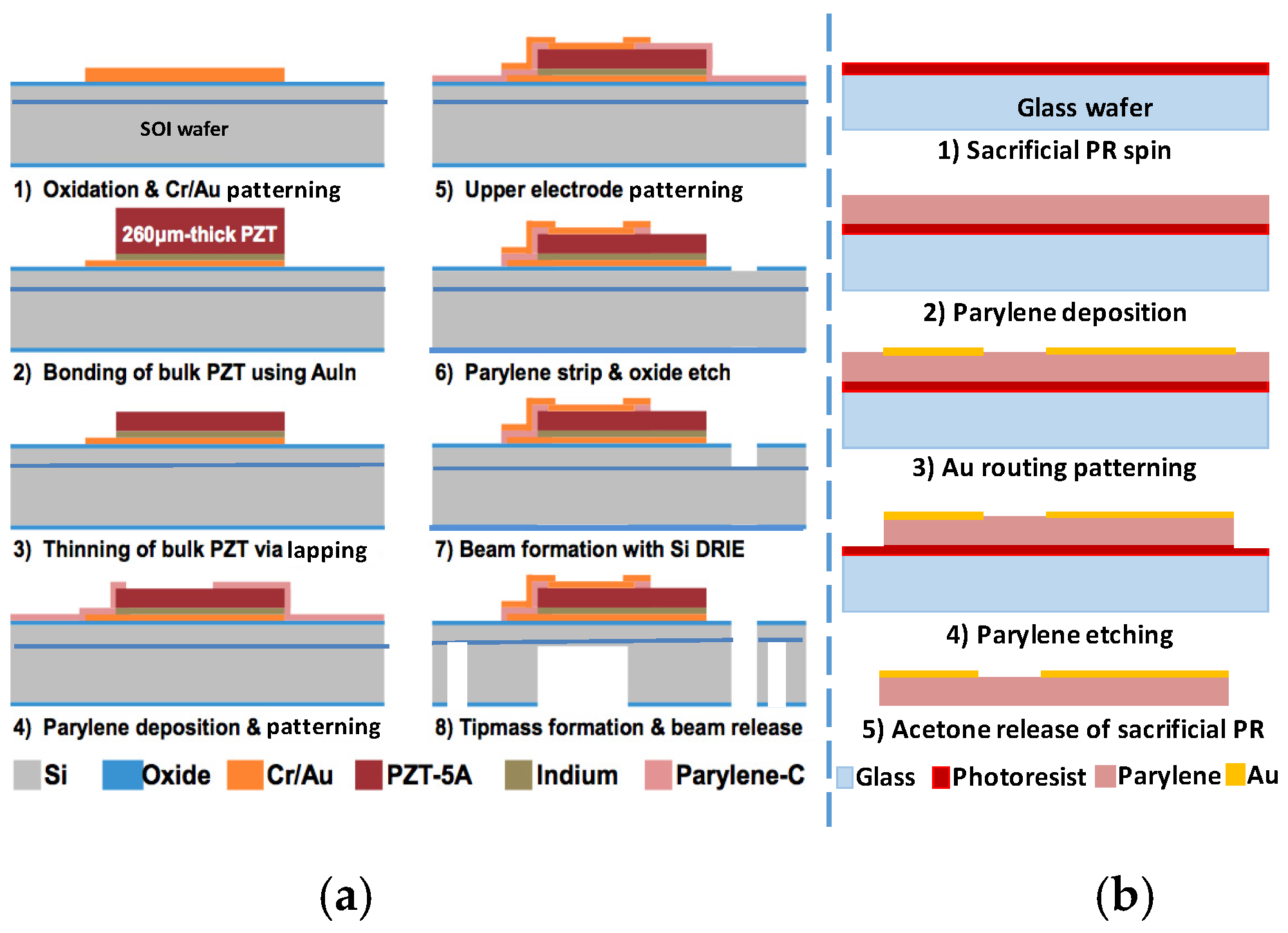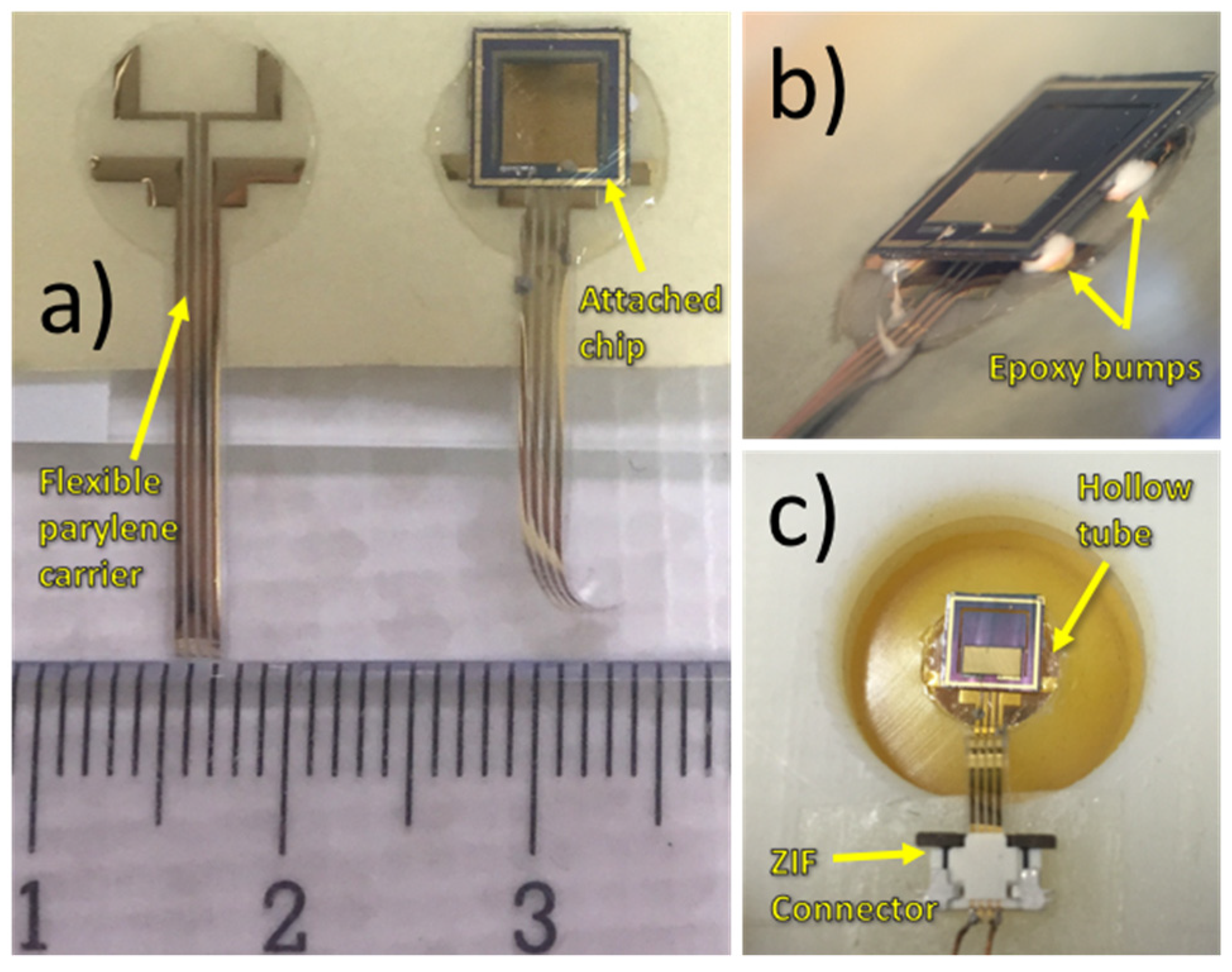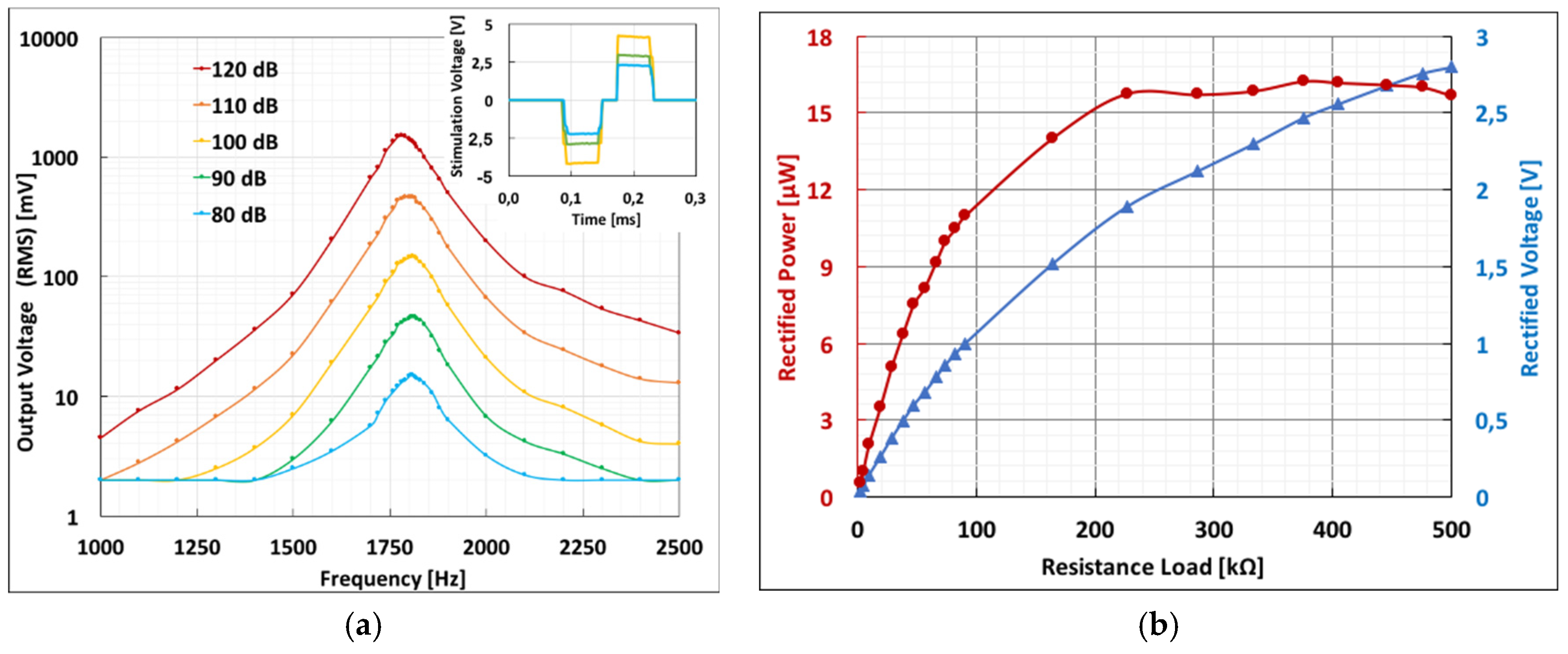Bulk PZT Cantilever Based MEMS Acoustic Transducer for Cochlear Implant Applications †
Abstract
:1. Introduction
2. Materials and Methods
3. Results
4. Discussion and Conclusions
Acknowledgments
Conflicts of Interest
References
- Cosetti, M.K.; Waltzman, S.B. Cochlear implants: Current status and future potential. Expert Rev. Med. Devices 2014, 8, 389–401. [Google Scholar] [CrossRef] [PubMed]
- Tomioka, S.; Kimura, S.; Tsujimoto, K.; Iizumi, S.; Uchida, Y.; Tomii, K.; Matsuda, T.; Nishioka, Y. Lead-Zirconate-Titanate Acoustic Energy Harvesters with Dual Top Electrodes. Jpn. J. Appl. Phys. 2011, 50, 09ND16. [Google Scholar] [CrossRef]
- Jang, J.; Lee, J.; Woo, S.; Sly, D.J.; Campbell, L.J.; Cho, J.-H.; O’Leary, S.J.; Park, M.-H.; Han, S.; Choi, J.-W.; et al. A microelectromechanical system artificial basilar membrane based on a piezoelectric cantilever array and its characterization using an animal model. Sci. Rep. 2015, 5, 12447. [Google Scholar] [CrossRef] [PubMed]
- Beker, L.; Zorlu, O.; Goksu, N.; Kulah, H. Stimulating auditory nerve with MEMS harvesters for fully implantable and self-powered cochlear implants. In Proceedings of the IEEE 17th International Conference on Solid-State Sensors, Actuators and Microsystems (TRANSDUCERS & EUROSENSORS XXVII), Barcelona, Spain, 16–20 June 2013; pp. 1663–1666. [Google Scholar]
- Yip, M.; Jin, R.; Nakajima, H.H.; Stankovic, K.M.; Chandrakasan, A.P. A Fully-Implantable Cochlear Implant SoC with Piezoelectric Middle-Ear Sensor and Arbitrary Waveform Neural Stimulation. IEEE J. Solid-State Circuits 2014, 50, 214–229. [Google Scholar] [CrossRef] [PubMed]
- Khan, F.U. Izhar State of the art in acoustic energy harvesting. J. Micromech. Microeng. 2016, 25, 023001. [Google Scholar] [CrossRef]




© 2017 by the authors. Licensee MDPI, Basel, Switzerland. This article is an open access article distributed under the terms and conditions of the Creative Commons Attribution (CC BY) license (https://creativecommons.org/licenses/by/4.0/).
Share and Cite
Koyuncuoğlu, A.; İlik, B.; Chamanian, S.; Uluşan, H.; Ashrafi, P.; Işık, D.; Külah, H. Bulk PZT Cantilever Based MEMS Acoustic Transducer for Cochlear Implant Applications. Proceedings 2017, 1, 584. https://doi.org/10.3390/proceedings1040584
Koyuncuoğlu A, İlik B, Chamanian S, Uluşan H, Ashrafi P, Işık D, Külah H. Bulk PZT Cantilever Based MEMS Acoustic Transducer for Cochlear Implant Applications. Proceedings. 2017; 1(4):584. https://doi.org/10.3390/proceedings1040584
Chicago/Turabian StyleKoyuncuoğlu, Aziz, Bedirhan İlik, Salar Chamanian, Hasan Uluşan, Parinaz Ashrafi, Dilek Işık, and Haluk Külah. 2017. "Bulk PZT Cantilever Based MEMS Acoustic Transducer for Cochlear Implant Applications" Proceedings 1, no. 4: 584. https://doi.org/10.3390/proceedings1040584




